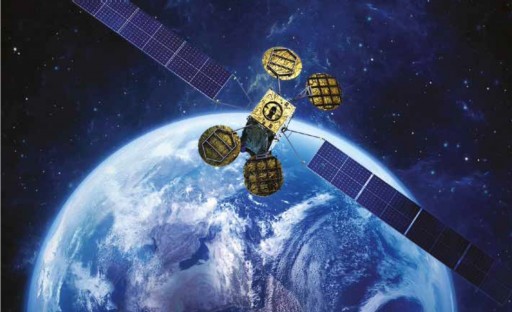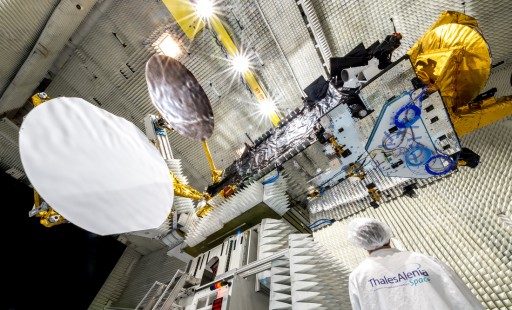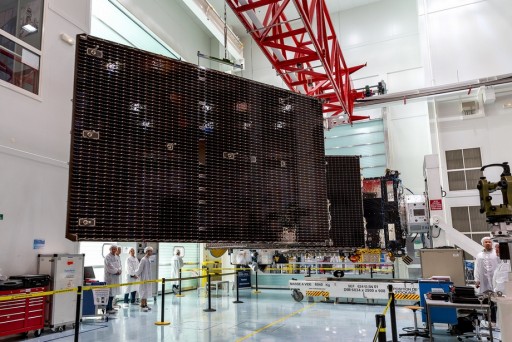Eutelsat 8 West B

Eutelsat 9 West B is a commercial communications satellite operated by Eutelsat S.A. and built by Thales Alenia Space. It carries a C/Ku-Band payload to deliver television broadcasting, video distribution and data network services to established markets in Europe and South America as well as emerging markets in Africa and the Middle East.
The satellite is based on the Spacebus-4000C3 spacecraft platform part of the Spacebus-3000/4000 series that covers a range of satellite masses and payload accommodations. The bus can support up to 16kW of payload power and uses a new avionics system with a 100-Volt power bus. Spacebus dates back to 1985 when the first Aérospatiale-built Spacebus satellite, flying under the Spacebus 100 designation was launched. Over the years, the capabilities of the satellites were expanded owed to more and more powerful launch vehicles becoming available, allowing transponders and equipment to be added to the satellites. Going through constant stages of modernization, Spacebus evolved into its 3000 and later the 4000 series which feature the same basic structure but different avionics systems. Thales provides an ITAR-free version of its satellite buses to allow spacecraft to launch on non-U.S. launch vehicles like the Chinese Long March rocket.

Spacebus 4000 uses a modular approach, with separate construction of the satellite platform and payloads for integration late in the manufacturing process. Eutelsat 9 West B measures 5.5 by 2 by 2.2 meters in size in its stowed configuration and has a launch mass of 5,782 Kilograms.
The satellite platform consists of carbon fiber with a composite honeycomb structure making up a central thrust structure facilitating the propellant tanks and a series of internal and external panels facilitating the various systems such as payloads, avionics modules and radiators.
The 4000 series features upgraded avionics, transitioning from a 50-Volt power bus to a system running at 100 Volts. Also, a new integrated onboard computer with a higher flexibility than previous versions was added and the satellite bus employs star trackers specifically designed for use in Geostationary Orbit to provide excellent pointing data for attitude control.
A chemical propulsion system is used for apogee-raising and stationkeeping in Geostationary Orbit for a minimum service life of 16 years. The satellite uses an S400 main propulsion system and S10 attitude control thrusters, each delivering 10N of thrust. The S400 series built by Airbus Defence and Space are bi-propellant engines using Monomethylhydrazine and Mixed Oxides of Nitrogen as propellants. Depending on the version used, S400 provides 420 to 425 Newtons of Thrust with a specific impulse of 318-321 seconds.

The Eutelsat 8 West B satellite is outfitted with 40 Ku-Band and ten C-Band transponders. The majority of Ku transponders are dedicated to delivering Direct to Home Television services to North Africa and the Middle East, a region that has seen a large increase in DTH customers over the past years – a trend that is expected to continue as capacity demand is predicted to increase by around 7% per year over the next several years. The MENA Ku-Band coverage zone covers North Africa and the Arabian Peninsula while the Eastern coverage area extends from north eastern Africa across the Arabian Peninsula into the Middle East. A smaller section of the Ku-Band capacity of the satellite is dedicated to cover South America, also delivering DTH and video services.
The C-Band payload covers two zones, a European Downlink Coverage zone that stretches across the entire European Continent and into Asia. The second zone covers the entire African continent, Europe – stretching as far north as Scandinavia, and reaching South America.
Eutelsat 8 West B is expected to operate for at least 15 years, stationed at 8° West in Geostationary Orbit.
